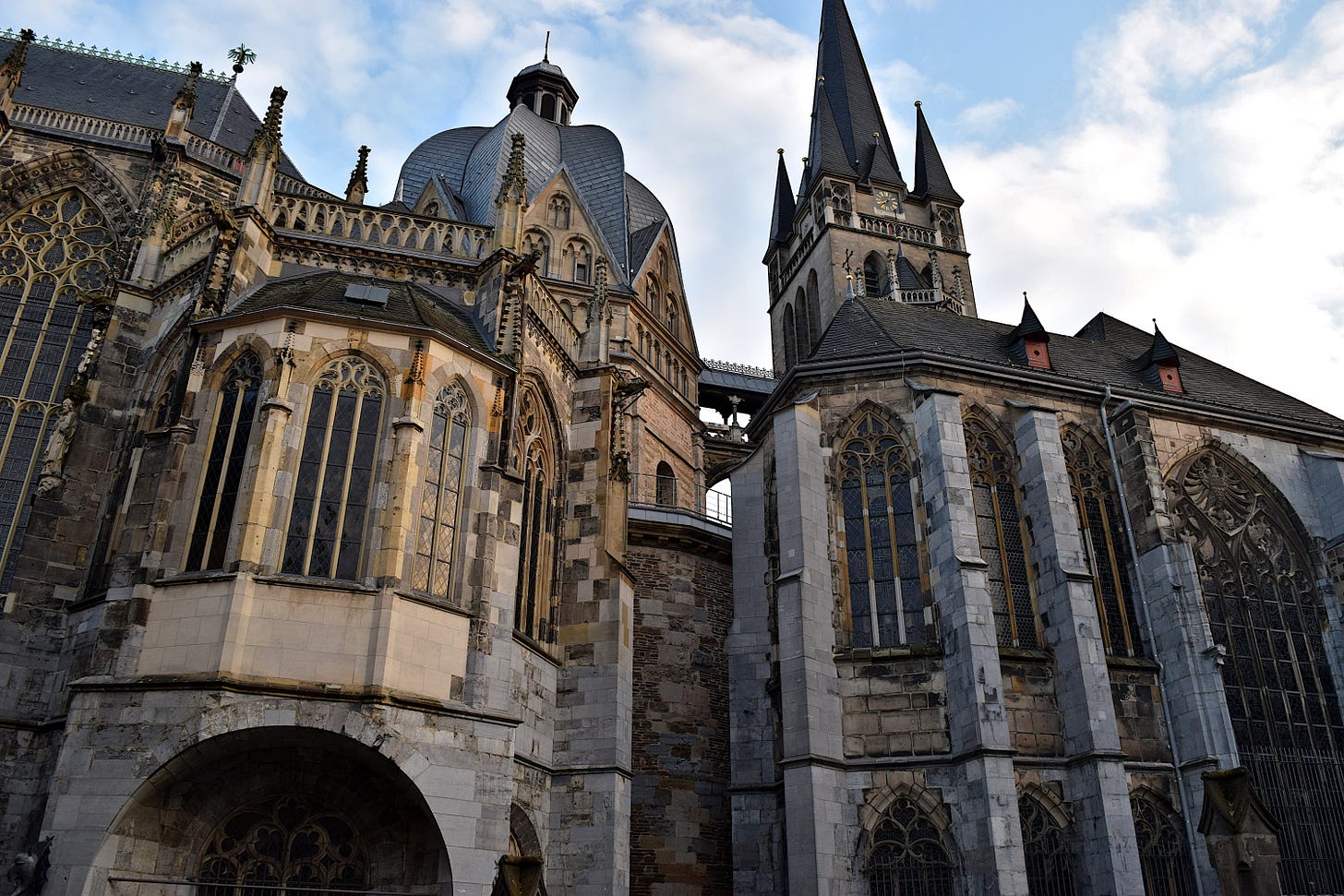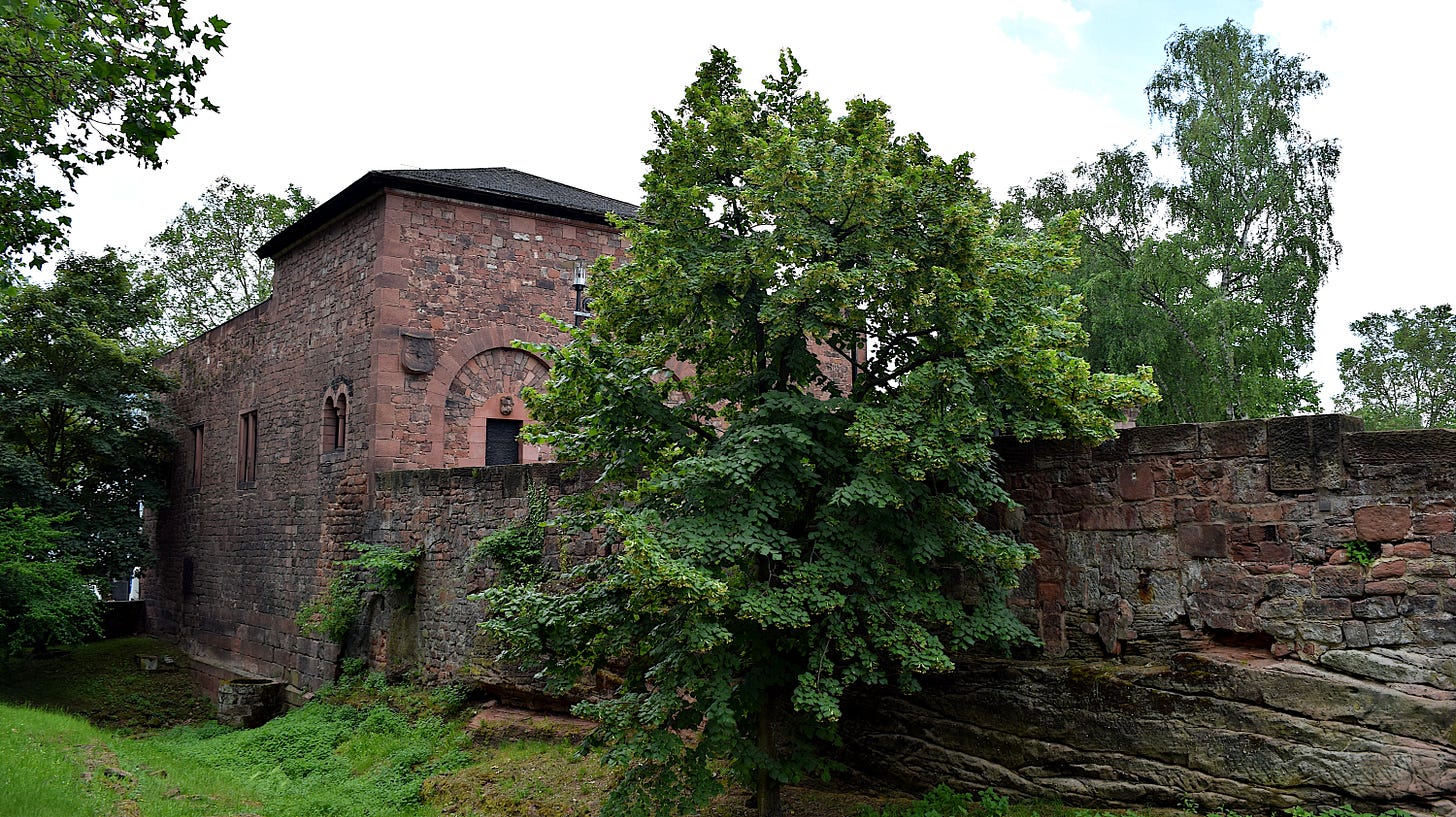A Brief Introduction to Architectural History
Architecture is one of the most powerful elements in a society, determining the atmosphere of cities and the space of their dwellers. But how does one properly classify architecture?
The Inextricable Link between Art and Architecture
Much of this text is adapted from my dissertation entitled: CITADEL Computational Investigation of the Topographical and Architectural Designs in an Evolving Landscape, which can be found here.
As architecture will be often discussed on this substack, it is essential to explain how architecture is analyzed and how one determines the period to which a building belongs. The truth is, most medieval buildings exhibit a mix of building phases from different periods, thereby complicating their classification.
The purpose of art history is to analyze and classify a work of art within its historical, cultural, and artistic context. The various contextual factors that are woven consciously, or otherwise, into a work of art provide it with its character and a form of timestamp, allowing art historians to accurately analyze a work’s meaning and classify it within a particular movement or phase.

Essential to the study of art history is a corpus, or collection, of items/sites that are similarly classified in order to determine trends over time and, particularly in the case of architecture, to determine trends in construction and ornamentation. As such, architectural history has been a key topic of research within the discipline of art history since the discipline first emerged in the early 19th century.
Studying architecture within the art historical ethos consists of categorizing the development of structures by analyzing construction phases based upon historical stylistic phenomena, including unique forms of portals, windows, tracery, architectural sculpture, and ornamentation. These factors lead to more accurate interpretations of buildings regarding their function and position/role within a historical architectural trend. Additionally, these factors lead to a more precise dating of a building, the necessity of which is excellently illustrated by Grossmann, 2010:
‘Whether the core components of the imperial castle in Nuremberg were constructed in 1180 or 1215, may not be of much meaning to the layman, especially when the building owner was a king of the Hohenstaufen dynasty. However, if one was no longer sure if the Reichsparteitagsgelände[1] in Nuremberg was constructed 1935-1940, ten years earlier, or ten years later, then correct historical assertions regarding its architectural form could not be made.’[2]
This exemplifies the necessity of first analyzing every building or construction phase within its strict historical context, using the available architectural indicators and historical documentation.
Construction Research
Clarifying the nuances of studying architecture is termed Bauforschung, German for ‘construction-research’ coined by Armin von Gerkan (1884 – 1969) in 1924, who spoke of developing ‘archaeological construction-research’ with regard to the architecture of antiquity. As archaeology and European art history began in the interest of understanding the civilizations of antiquity, the emphasis upon developing sub-topics and methodologies that did not require a written record increased.

In its current form, construction research studies the entirety of a building’s condition and its relation from the earliest form until the modern-day, which can be augmented by an archaeological excavation.
Regardless of the written record of a site, the primary source material for a building is the building itself
This does not undermine the importance of archival work to identify historical primary sources, often in the form of historical charters, illustrations, or maps contemporaneous to the construction phases of the building in question. Nor does this dismiss the importance of a literature review of secondary sources concerning previous research pertaining to a particular site.
Instead, all of these components make for a more holistic understanding of the historical, cultural, and artistic context—as is the intention of the discipline of art history—but the key source of evidence is always the material record. Spending time in front of a building, analyzing its features, contemplating the periods of their construction, and postulating their purpose is the most valuable step in researching architecture.
As more case studies are researched, a more precise sequence of historical architectural trends emerges, buttressed by detailed descriptions of the case study sites themselves. In essence, construction research, is a case study based verification of architectural history.
[1] The Reichsparteitagsgelände were the unfinished Nazi party rally grounds in Nuremberg, Germany.
[2] Grossmann, Einführung in die historische und kunsthistorische Bauforschung. P. 9. Translated from the German into English by Pattee. The original text is as follows: ‚Ob die Nürnberger Kaiserburg in ihren Hauptbauteilen eher um 1180 oder erst um 1215 entstand, mag dem Laien heute weniger bedeutungsvoll erscheinen, zumal wenn der Bauherr im einen wie im anderen Fall ein staufischer König wäre. Doch wenn man nicht mehr sicher wüsste, ob das Nürnberger Reichsparteitagsgelände 1935-40 entstand, zehn Jahre früher oder später, ließen sich kein korrekten historischen Aussagen aus der Architekturform entwickeln.‘
The key resources for this article can be found here:
Binding, Günther. Architektonische Formenlehre. 8th ed. Wissenschaftliche Buchgesellschaft, 2019.
Grossmann, G. Ulrich. Einführung in die historische und kunsthistorische Bauforschung. Darmstadt: Wissenschaftliche Buchgesellschaft, 2010.
Untermann, Matthias. Der Zentralbau im Mittelalter: Form, Funktion und Verbreitung. 1st ed. Darmstadt: Wissenschaftliche Buchgesellschaft, 1989.





“ As more case studies are researched, a more precise sequence of historical architectural trends emerges, buttressed by detailed descriptions of the case study sites themselves.”
“Buttressed” — cute how you slipped that in!!!